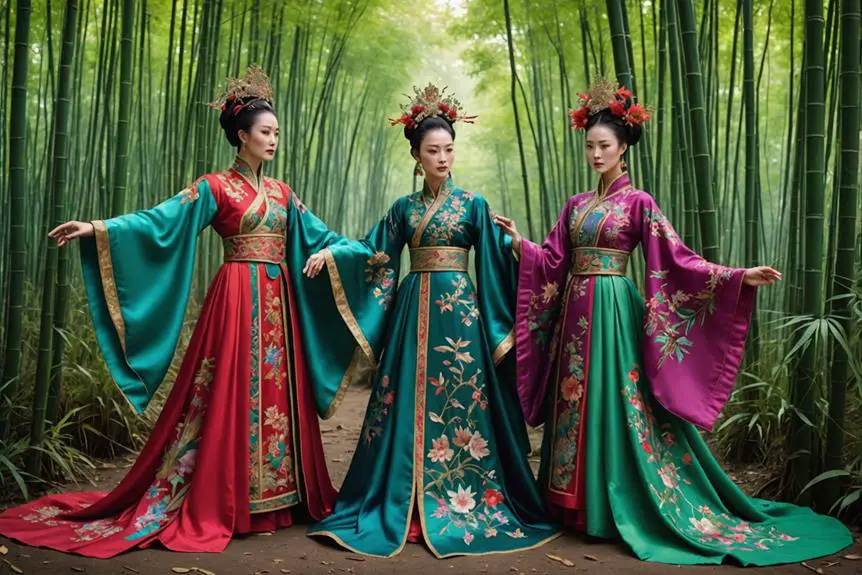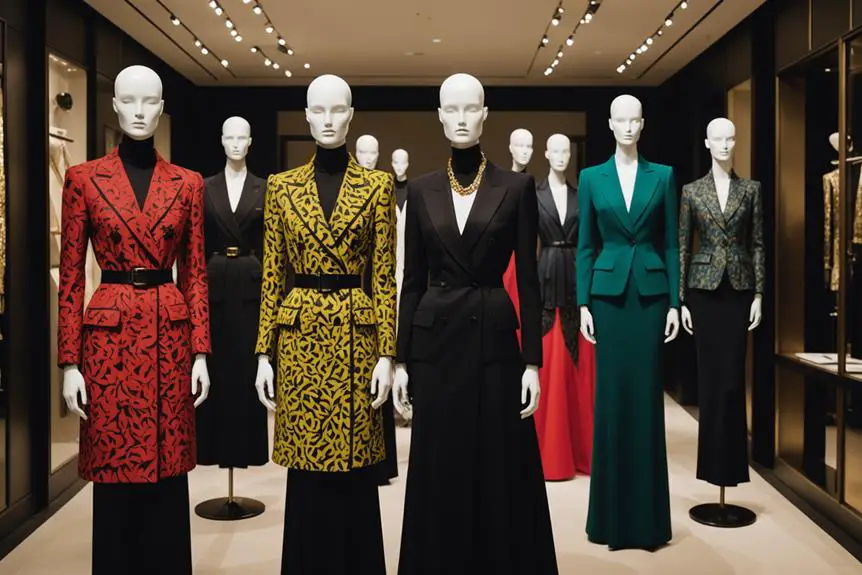In "House of Flying Daggers," the vibrant costumes serve as a tapestry that weaves together themes of love and betrayal. Each outfit you see is more than just fabric; it's a reflection of the character's journey and societal status during the Tang Dynasty. As you explore the intricate designs and their cultural significance, you might find yourself questioning how these visual elements shape your understanding of the story. What deeper meanings can be uncovered in these striking ensembles, and how do they influence the narrative's emotional landscape?
Significance of Costume Design
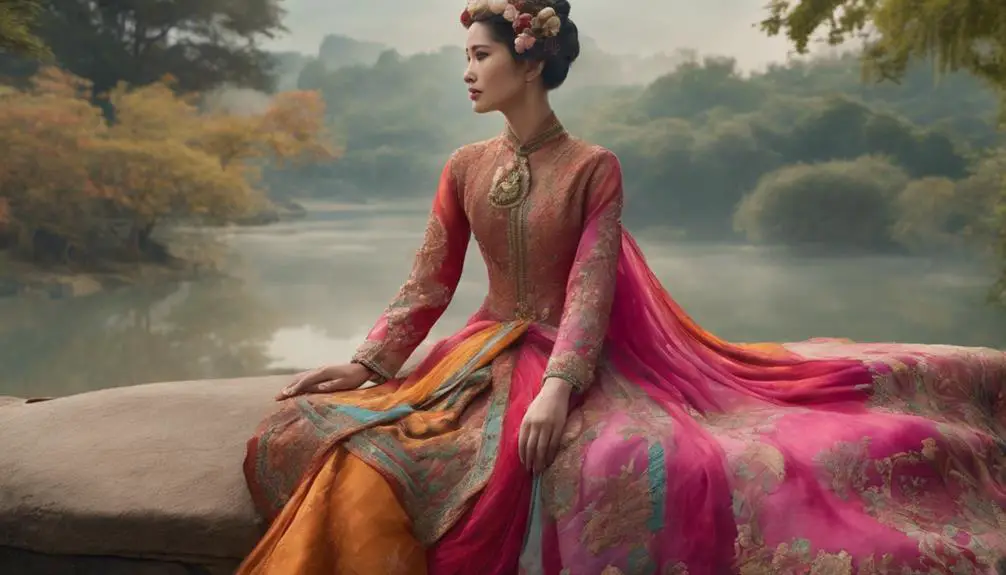
Costume design plays an essential role in "House of Flying Daggers," shaping how you perceive the characters and their journeys. You might not realize it at first, but every outfit tells a story. The costumes reflect traditional Chinese clothing styles, like Hanfu and Qipao, which adds a rich layer of authenticity to the film's setting in the Tang Dynasty. Isn't it fascinating how clothing can transport you to another time?
The designers put a lot of thought into each piece. They used intricate techniques, like dyeing and trimming, to create visually stunning outfits that resonate with themes of love and betrayal. Just picture it: a flowing dress catching the wind, symbolizing freedom or a tight-fitting outfit that hints at deception. Each costume is crafted carefully to symbolize deeper narrative elements, making you think about the characters' emotional conflicts and social statuses.
These stunning outfits not only catch your eye but also influence how you feel about the characters. You might find yourself rooting for someone based on what they wear! The costumes enhance the storytelling and character dynamics, pulling you into the drama and excitement of the film.
Key Characters and Their Outfits
In "House of Flying Daggers," each key character's outfit enhances their narrative and emotional journeys. The costumes serve as a visual feast, rich in color symbolism and fabric choices. You can really see how the characters evolve through their attire, making it an essential part of the storytelling.
- Xiao Mei, played by Zhang Ziyi, wears stunning costumes that blend tradition with intricate detailing. Her outfits reflect her dual identity as a dancer and a fighter. Those flowing fabrics and elaborate accessories not only highlight her femininity but also help her in martial arts choreography. Pretty smart, right?
- Jin, portrayed by Takeshi Kaneshiro, dons a mix of military and casual attire. This choice symbolizes his complex role as both a spy and a romantic interest. Layers and rich fabrics add depth to his character, making him intriguing.
- The costumes in the Peony Pavilion scenes are vibrant and full of elaborate patterns. They enhance the visual storytelling while representing the characters' emotions and social statuses. You can't help but be drawn in!
- The film cleverly integrates traditional elements like Hanfu and Qipao styles, which evoke the Tang Dynasty's historical context. Yet, they still appeal to modern audiences with their aesthetic charm.
Cultural Influence on Designs
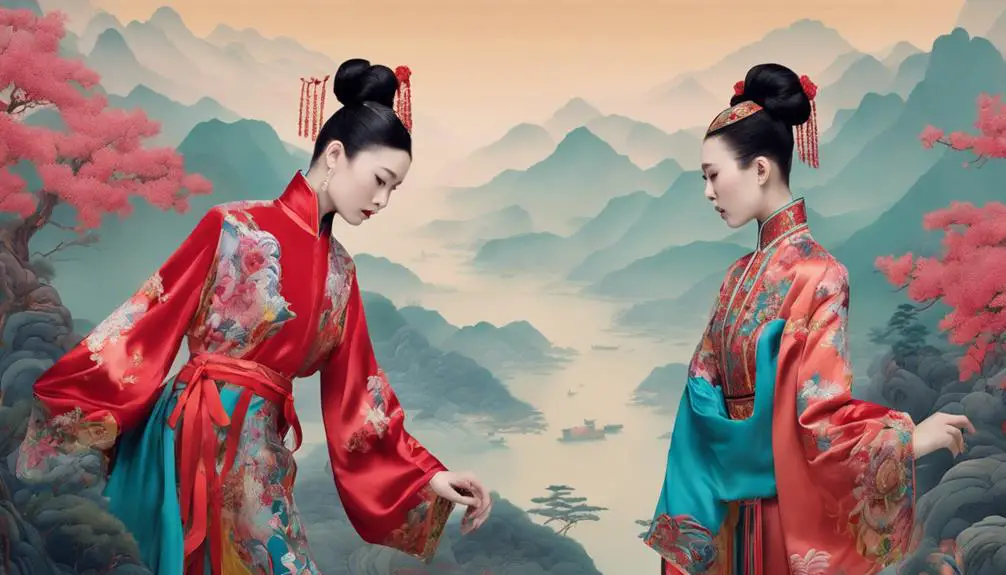
The cultural influence on the designs in "House of Flying Daggers" is evident through the meticulous use of traditional Chinese clothing styles, especially the Hanfu and Qipao. These outfits aren't just pretty; they tell a story about the characters and their place in society. Can you imagine how vibrant those colors must look on screen? The intricate designs and traditional textiles reflect the rich history of Chinese fashion, emphasizing both beauty and cultural significance.
Costume designer Wei Zheng really nailed it by using diverse fabrics and techniques. Each garment visually represents the characters' personalities and social standings within the Tang Dynasty. The flowing nature of the costumes enhances the martial arts scenes, making each movement look graceful and powerful. It's like the outfits have a life of their own!
Now, let's talk gender representation. The female characters wear elaborate, feminine costumes, which might seem traditional. However, it's fascinating how they also portray strong, skilled fighters. This contrast showcases the tension between traditional gender roles and personal agency in Chinese culture. It makes you think: can someone be both feminine and fierce? Absolutely!
In "House of Flying Daggers," every detail is thoughtfully designed, blending historical accuracy with stunning visuals. So, next time you watch the film, pay attention! The costumes aren't just there for looks; they're an essential part of the storytelling.
Iconic Scenes and Fashion
Often, the costumes in "House of Flying Daggers" become as memorable as the iconic scenes themselves, intertwining fashion with pivotal moments in the story. You can't help but be captivated by how the outfits elevate the film's emotions and themes. Take a look at these four standout aspects:
- Dance Choreography: In the breathtaking Peony Pavilion dance scene, Xiao Mei, played by Zhang Ziyi, wears a stunning red and gold costume. The flowing fabric moves in harmony with her performance, showcasing both her grace and her fierce spirit.
- Color Symbolism: The vibrant hues aren't just pretty; they tell a story. Red represents passion, while gold symbolizes wealth and power. These colors reflect the characters' emotional journeys, especially during moments of love and betrayal.
- Fabric Movement: The costumes are designed to enhance martial arts choreography. As the characters fight, the layered outfits create a visual feast, making each movement feel fluid and dynamic. You really feel the action!
- Dramatic Detailing: Every floral pattern or intricate stitch adds depth to the film's romantic atmosphere. Costume designer Ye Jintian poured thought into each outfit to guarantee it mirrored the characters' identities and struggles.
Tips for Cosplaying Characters
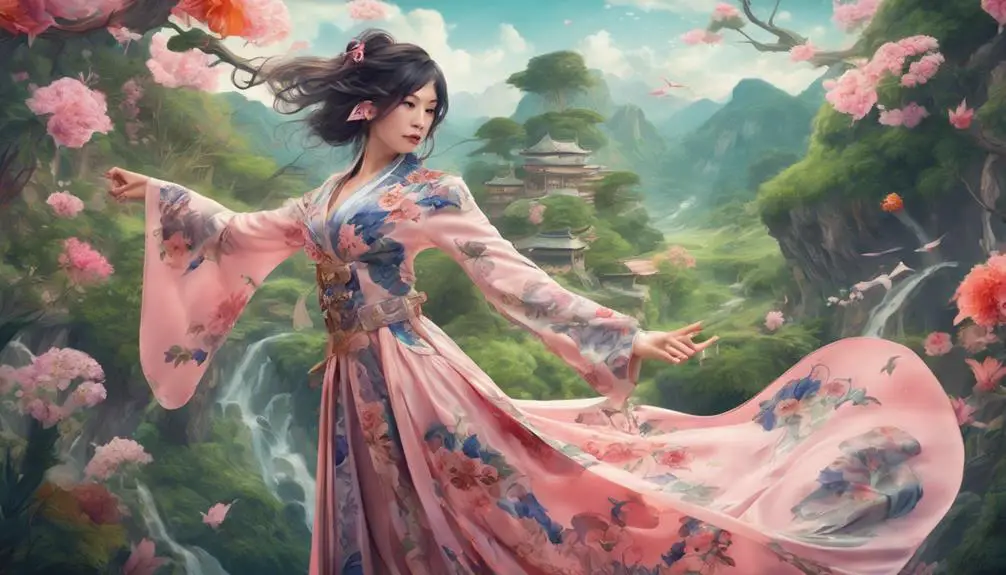
Have you ever wanted to bring the stunning costumes of "House of Flying Daggers" to life through cosplay? Well, you're in for a treat! First up, immerse yourself in fabric sourcing techniques. Check out local fabric stores or online shops for materials that mimic the layered fabrics and intricate designs of Xiao Mei's costume. Don't shy away from experimenting with dyeing techniques to achieve those vibrant character color palettes—think bold reds and soft pastels that really pop!
Now, let's chat about performance durability considerations. When you're crafting your costume, it's crucial to think about how it will hold up during wear. For example, incorporate practical elements like thigh pouches for prop storage. These can be both functional and stylish, reflecting the historical context while keeping your gear handy.
And what about those headpieces? Stability is key! Use lightweight materials like resin, and secure your designs with bobby pins to keep everything in place during your epic performances. You don't want your gorgeous headpiece to shift mid-pose, right?
Lastly, don't forget the power of collaboration! Team up with fellow cosplayers for costume construction tips and choreography. It'll not only enhance your visual impact but also make the experience way more fun. So gather your materials, channel your inner warrior, and let's make those "House of Flying Daggers" costumes come to life!
Frequently Asked Questions
Where Is House of Flying Daggers Filmed?
You'll discover that "House of Flying Daggers" was filmed in stunning locations like Zhangjiajie National Forest Park and Chengdu, blending production design with cultural influences to create a visually enchanting portrayal of ancient China.
Is Mei Blind in House of Flying Daggers?
As you watch Mei artfully navigate her world, you realize she isn't truly blind. Mei's perception reveals the symbolism in blindness, highlighting her character's strength and vulnerability, enhancing the film's intricate dance of deception.
Is House of Flying Daggers a Sequel?
No, "House of Flying Daggers" isn't a sequel. You'll find unique character motivations and unexpected plot twists that stand alone, offering rich film connections without relying on prior stories or existing franchises.
What Is the Film Form of the House of Flying Daggers?
Did you know "House of Flying Daggers" earned multiple awards for its breathtaking visuals? Its cinematic techniques enhance visual storytelling, while character development weaves a complex narrative, engaging you deeply in the unfolding drama and emotions.
